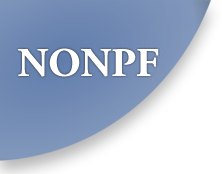How to incorporate clinical simulation into the Graduate MSN/DNP curriculum (Family Nurse Practitioner and Adult Gerontology Acute Care Nurse Practitioner
Friday, April 24, 2015: 11:15 AM-12:30 PM
Holiday 1-2 (Hilton Baltimore)
Presenters: Stephanie Burgess, PhD, APRN, BC, FAANP1, Robin Traufler, MN, APRN, ACNP, BC2 and Sheryl Mitchell, DNP, APRN, FNP-BC, ACNP-BC2, (1)University of South Carolina, Columbia, SC(2)College of Nursing, University of South Carolina, Columbia, SC
Clinical simulation has been recognized as a teaching method using learning exercises that mimic real life situations. The development of evidence-based scenarios and guidelines for NP faculty are important steps in redesigning graduate NP education. Simulated clinical experiences require immersing students in scenarios for assessing competency in clinical courses. Using high fidelity manikins and two experts assisting NP faculty with the development of scenarios and conducting simulation, NP faculty have successfully piloted check offs in clinical courses to assess NP student competency for managing patients. Steps used to successfully pilot check offs included first devising the evidence-based scenarios, which included writing well thought circumscribed scripts for faculty when students ask the manikin history questions, developing a comprehensive written check list of the student’s physical exam performance based on NONPF competencies, and collaborating with simulation experts in programing the manikins for scenarios. Other steps included developing an introductory online module for the students to acclimate themselves to the simulation lab with a faculty demonstration of conducting an assessment using the manikin. Per expert advice, faculty hold individual debriefing sessions with the students to review strengths, opportunities for growth, and gaps in application. The goals are to identify students’ strengths and areas for improvement, demonstrate competency of skills and critical thinking, and foster confidence. Lessons learned include ensuring scenarios are evidence-based for assessing NP competency, adhering to the script, managing student anxiety, scheduling increased numbers of students, incorporating a standardized evaluation tool to assess student outcomes, and managing student failures. Furthermore, based on student feedback from our initial simulation, we have incorporated debriefing as a major part of student clinical simulation evaluation.
See more of: Workshop

